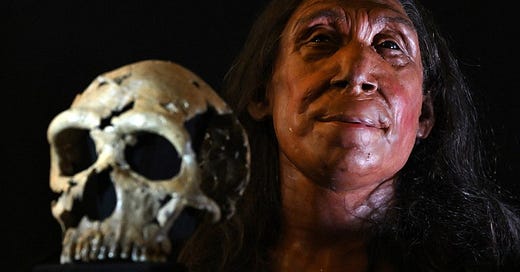Neanderthal-Human Interbreeding: Brief But Impactful
Introgression between Neanderthals and Humans
Subscribe to Genomely for the latest discoveries and in-depth analyses in your inbox.
Thank you to our subscribers for your continued support and passion for science!
The timeline and impact of interbreeding between Neanderthals and anatomically modern humans has been of great interest. For example, major genetic risk factors for severe COVID-19 have been inherited from Neanderthals in humans. New research, which analyzed genomes from ancient and modern humans, reveals that this genetic mingling began approximately 47,000 years ago and lasted for around 6,800 years. This period of interbreeding has left a significant and selective legacy in the human genome, with many Neanderthal genes being rapidly purged due to their potential detriment to human adaptation.
The Historical Context
Around 60,000 years ago, as Homo sapiens (humans) began migrating out of Africa, they encountered Neanderthals in western Eurasia. These encounters led to interbreeding, but the extent and duration of these interactions have been debated. Previous estimates suggested a broad window of 50,000 to 60,000 years ago for this genetic exchange. However, pinpointing the exact timeline and understanding its evolutionary consequences have remained challenging due to limited and fragmented genetic data.
Methodology and Findings
To overcome these challenges, Leonardo Iasi and his team at the Max Planck Institute for Evolutionary Anthropology, alongside Priya Moorjani at the University of California, Berkeley, conducted a high-resolution analysis involving 58 ancient individuals who lived between 2,200 and 45,000 years ago. These were compared with 231 modern individuals of non-African descent, as those of full African ancestry do not carry significant Neanderthal DNA.
The researchers found that the gene flow from Neanderthals to modern humans occurred in a concentrated time, starting around 47,000 years ago and continuing until about 40,000 years ago. This period corresponds closely with the time Neanderthals were approaching extinction. This relatively brief period is notable for its substantial genetic impact despite its short duration in evolutionary terms.
Evolutionary Dynamics
One of the study's significant insights is the rapid removal of many Neanderthal genetic sequences from the Homo sapiens genome. The analysis identified large genomic regions in modern humans devoid of Neanderthal DNA, even in ancient genomes from the end of the interbreeding period. This suggests that many Neanderthal genes were disadvantageous to human survival and were quickly purged by natural selection.
Emilia Huerta-Sanchez, an evolutionary biologist at Brown University, emphasized that this study fills critical gaps in our understanding of how evolutionary forces have shaped human genetic diversity. However, she also noted that more research is needed, especially in regions like Oceania and East Asia, where modern humans retain higher levels of Neanderthal DNA.
The Complexity of Human Evolution
This research not only refines our understanding of the timeline and impact of Neanderthal-Homo sapiens interbreeding but also highlights the complex dynamics of human evolution. The selective retention and purging of Neanderthal genes underscore the intricate interplay between genetics and environment in shaping our species.
The study, while comprehensive, leaves open questions about the specific evolutionary pressures that led to the rapid elimination of many Neanderthal genes and how these dynamics played out in different human populations. Future research focusing on underrepresented regions and additional ancient genomes will be crucial in providing a more complete picture of our shared evolutionary history with Neanderthals.
References:
https://www.nature.com/articles/d41586-024-01452-3
https://doi.org/10.1101/2024.05.13.593955
https://pubmed.ncbi.nlm.nih.gov/32998156/





